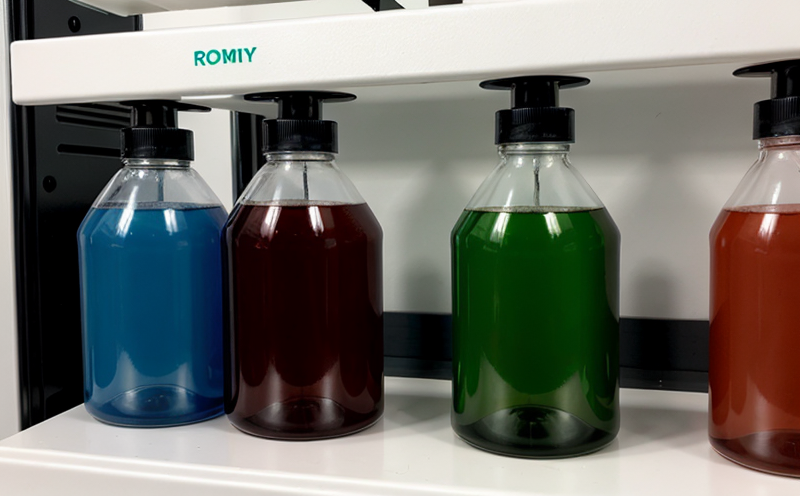GB T 1043 Impact Reactivity Testing of Plastics
The GB/T 1043 standard is a widely recognized method used to assess the impact reactivity and toughness of plastics. This test evaluates how a plastic specimen withstands an impact load, providing insights into its resistance to crack growth under dynamic loading conditions. Understanding this property is crucial for industries that rely on durable and reliable materials in their products.
The test is particularly important in sectors such as automotive, aerospace, construction, and consumer goods, where the integrity of plastics under stress is paramount. In these applications, materials must not only be strong but also capable of withstanding sudden impacts without fracturing or exhibiting excessive deformation. The GB/T 1043 test helps ensure that plastic parts and components meet these stringent requirements.
The test involves subjecting a notched specimen to an impact load using a pendulum apparatus. The energy absorbed by the specimen during this process is measured, providing a quantitative assessment of its toughness. This value can then be used in design specifications or quality control processes to ensure that products perform as expected under real-world conditions.
The significance of this testing lies in its ability to predict how a plastic part will behave when subjected to sudden impacts, such as those encountered during manufacturing, transportation, or use. By understanding the impact reactivity of plastics, manufacturers can optimize their materials and processes to enhance product safety and durability.
For instance, in the automotive industry, ensuring that bumper parts are capable of absorbing significant energy from a collision is critical for occupant protection. Similarly, in construction, knowing the impact resistance of structural components helps prevent failures under unexpected loads. The GB/T 1043 test provides a standardized method to achieve these objectives.
The apparatus used in this testing typically includes a pendulum impact tester that delivers a controlled impact force to the specimen. The energy absorbed by the specimen is then calculated using specific formulas provided in the standard. This allows for precise and reproducible results, which are essential for quality assurance and compliance with industry standards.
In summary, GB/T 1043 impact reactivity testing is an indispensable tool for ensuring that plastics used in critical applications meet performance requirements. Its role in enhancing product safety and durability cannot be overstated, making it a vital component of material selection and evaluation processes across various industries.
Applied Standards
| Standard | Description |
|---|---|
| GB/T 1043-98 | This standard specifies the method for determining the impact reactivity of plastics. It outlines the procedures and apparatus required for conducting the test, as well as the conditions under which the test should be performed. |
| ASTM D256 | This American Society for Testing and Materials (ASTM) standard is similar to GB/T 1043-98 and provides additional methods for determining impact strength. It may be used in conjunction with GB/T 1043 when more detailed analysis is required. |
| EN ISO 178 | This European standard offers a similar approach to measuring the impact properties of plastics, providing alternative conditions and apparatus for testing. |
The GB/T 1043-98 standard is particularly relevant in China and other regions that follow Chinese standards. It provides a clear framework for conducting tests according to internationally recognized protocols, ensuring consistency and reliability across different laboratories and industries.
When comparing GB/T 1043 with ASTM D256 or EN ISO 178, slight variations may be observed in the test procedures. However, the core principle of assessing impact reactivity remains consistent. These standards complement each other, offering comprehensive coverage for different regions and industries.
Eurolab Advantages
EuroLab offers unparalleled expertise in conducting GB/T 1043 impact reactivity testing. Our team of highly qualified professionals ensures that every test is conducted with precision and accuracy, adhering strictly to the specified standards.
- Certified Laboratories: EuroLab’s facilities are ISO/IEC 17025 accredited, ensuring the highest level of quality in our testing services.
- Advanced Equipment: We utilize state-of-the-art impact testers that meet or exceed all relevant standards, providing reliable and consistent results.
- Comprehensive Reporting: Our reports are detailed and easy to understand, offering not only the test results but also insights into the implications of those results for your product development process.
- Expert Consultation: Our engineers can provide valuable advice on material selection and processing techniques based on the outcomes of our tests.
By choosing EuroLab, you benefit from years of experience in chemical testing and a commitment to excellence. Our services are tailored to meet the specific needs of your industry, ensuring that you receive the most relevant and accurate data possible.
Environmental and Sustainability Contributions
- Product Durability: By identifying weak points in plastic parts, GB/T 1043 testing helps manufacturers enhance product durability. This reduces the frequency of product failures and replacements, leading to longer-lasting products.
- Energy Efficiency: Durable materials require less frequent replacement, which can lead to reduced energy consumption across industries that rely on these components.
- Resource Conservation: The ability to design more robust plastic parts helps conserve raw materials and reduce waste throughout the product lifecycle.
- Cost Savings: Enhanced durability translates into cost savings for both manufacturers and consumers by reducing maintenance costs and extending product life.
The GB/T 1043 impact reactivity testing plays a crucial role in promoting sustainable practices by ensuring that plastics used in critical applications meet stringent performance requirements. This, in turn, contributes to more efficient resource use and reduced environmental impact.





